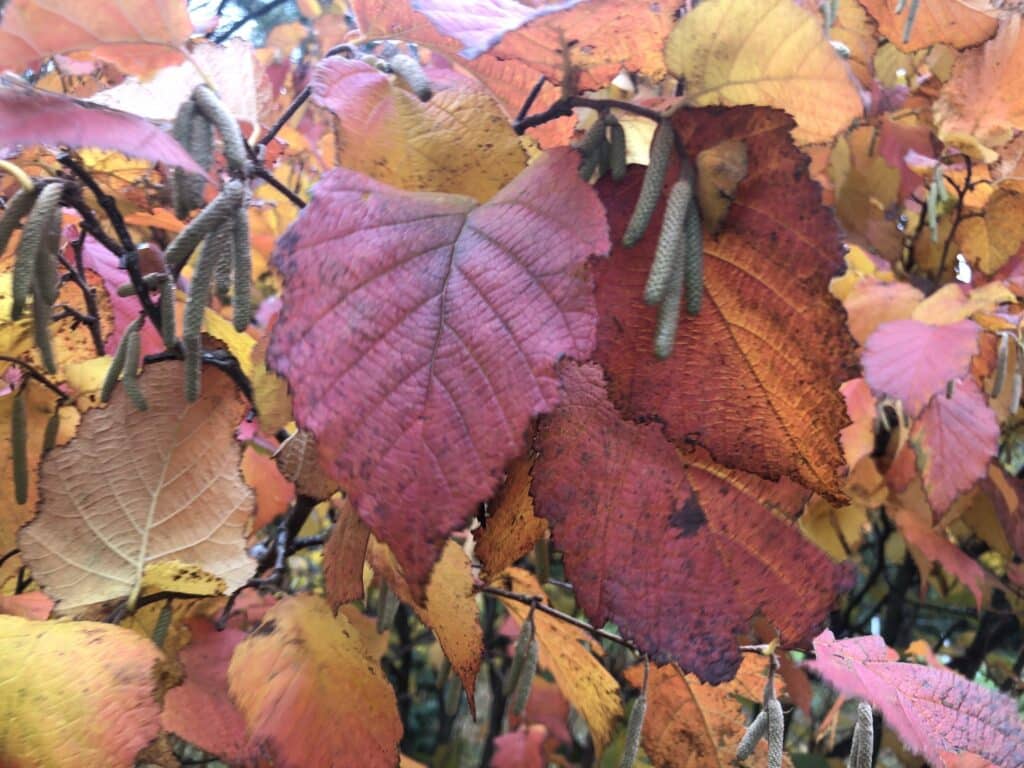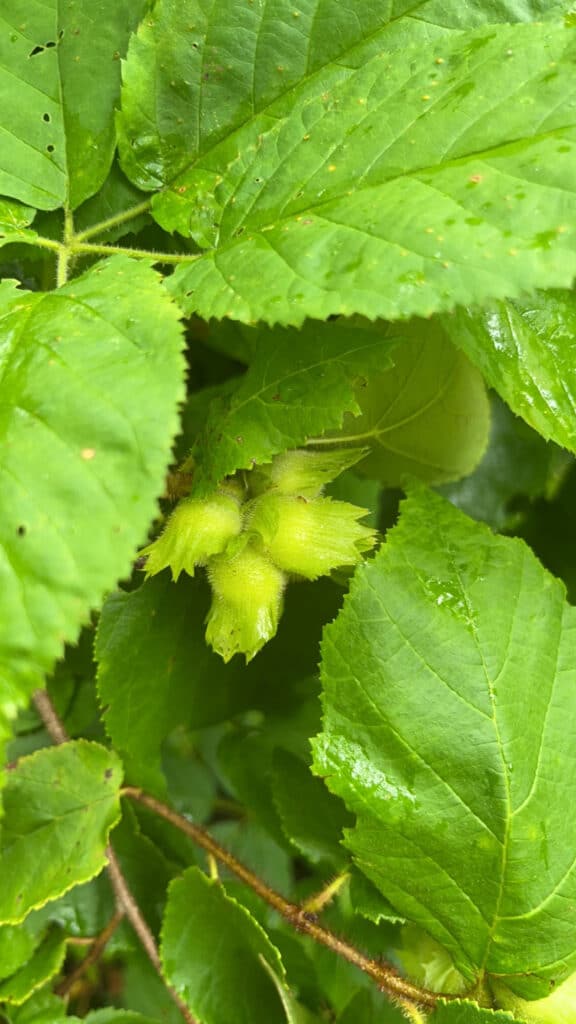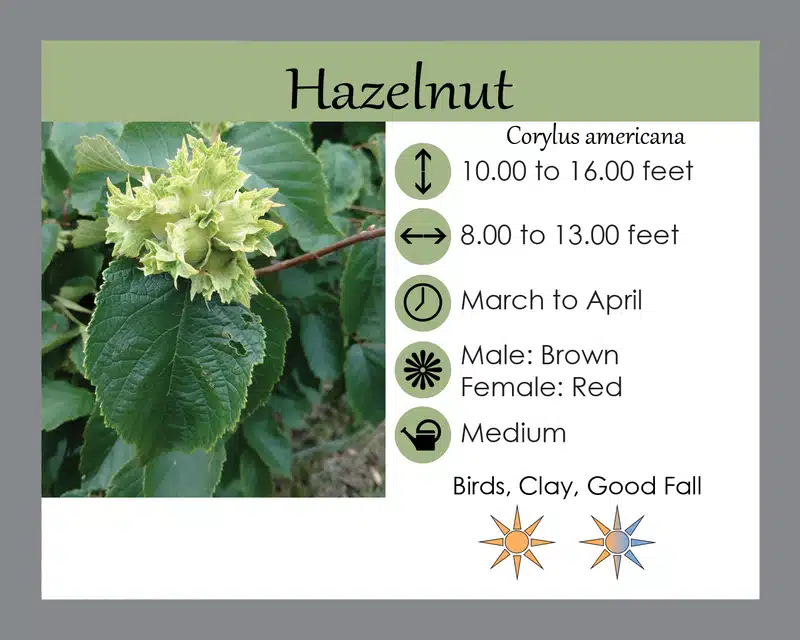Edible Beauties
Corylus americana – Hazelnut
Corylus americana, commonly called American filbert or hazelnut, is a deciduous, rounded, multi-stemmed shrub which typically grows 8-16′ tall. This shrub occurs in dry or moist thickets, woodlands and wood margins, valleys, uplands and prairies. It easily grows in average, medium, well-drained soil in full sun to part shade.
The nuts are similar in flavor to the European filbert. Roast them for eating or grind into flour for cooking or baking. Leaves are oval-shaped, toothy, and dark green (3-6″ long). Fall color is quite variable and ranges from attractive combinations of orange, rose, purplish red, yellow and green to dull yellowish green. Highly attractive to wildlife due to its nuts, leaves, and catkins. The dense growth habit provides nesting and cover. Lastly, it hosts numerous moths including Polyphemus, and Io.
Pollination Information
This species is monoecious (separate male and female flowers on the same plant). In spring, male flowers appear as yellowish brown catkins and female flowers appear as small, reddish, inconspicuous catkins. They need at least two plants with separate genetics to bear nuts. In addition that, this plant is wind pollinated, so they should be planted fairly close together. Female flowers give way to small, egg-shaped, 1/2″ long, edible nuts (maturing July-August) which are encased in leafy, husk-like, ragged-edged bracts.
Click here to get a quote for the American Hazelnut in our Online Shop

Hazelnut fall foliage

Unripe hazelnuts

